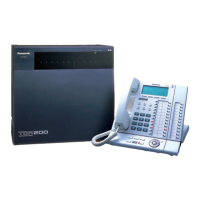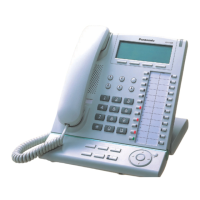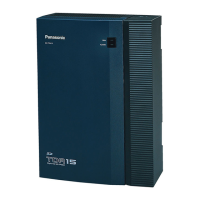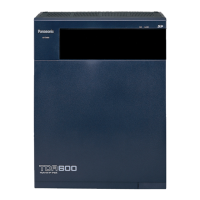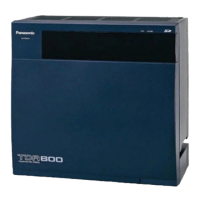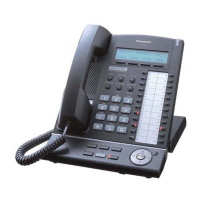1.13 P
236 Feature Manual
Conditions
• A CO line which is used for a private network should be assigned "Private" as the networking type.
(→ 1.9.10 INCOMING CALL FEATURES)
• To establish a QSIG network (→ 1.13.18 PRIVATE NETWORK FEATURES—QSIG), each ISDN
(QSIG) connection in a TIE line network must have the port on one Panasonic Hybrid IP-PBX assigned
as a master port, and the port on the other Panasonic Hybrid IP-PBX assigned as a slave port.
[TIE Line Network Connection Example]
• [TIE Call by Own PBX Extension Number]
When only two PBXs are connected in a network (not including a VoIP network), both PBXs can have
extensions with the same leading number.
Explanation:
If a dialed number is not found at the local PBX, the call can be sent to the remote PBX.
When an extension number is dialed, the PBX first searches local extensions for a matching number.
If there is no match, the PBX then checks the TIE Line Routing Table for a corresponding entry. If an
entry is found, the call is sent to the connected PBX.
Case 1:
Extension 1012 of PBX-1 dials extension number "1011".
→ The dialed number is found at the local PBX, so extension 1012 of PBX-1 is connected to
extension 1011 of PBX-1.
Case 2:
Extension 1012 of PBX-1 dials extension number "1013".
→ The dialed number is not found at the local PBX, so the call is redirected to the specified TIE
Line, and extension 1012 of PBX-1 is connected to extension 1013 of PBX-2.
PBX-1
PBX-3
PBX-2
Extn.1000
:
Extn.1999
Extn. 2000
:
Extn. 2999
(A) Master
(B) Master
(C) Master
QSIG Network
(A) Slave
(C) Slave
(B) Slave
Extn. 3000
:
Extn. 3999
PBX-1
TIE Line
PBX-2
InterfaceInterface
Extn. 1013
Extn.1011 Extn.1012
Dials "1013".

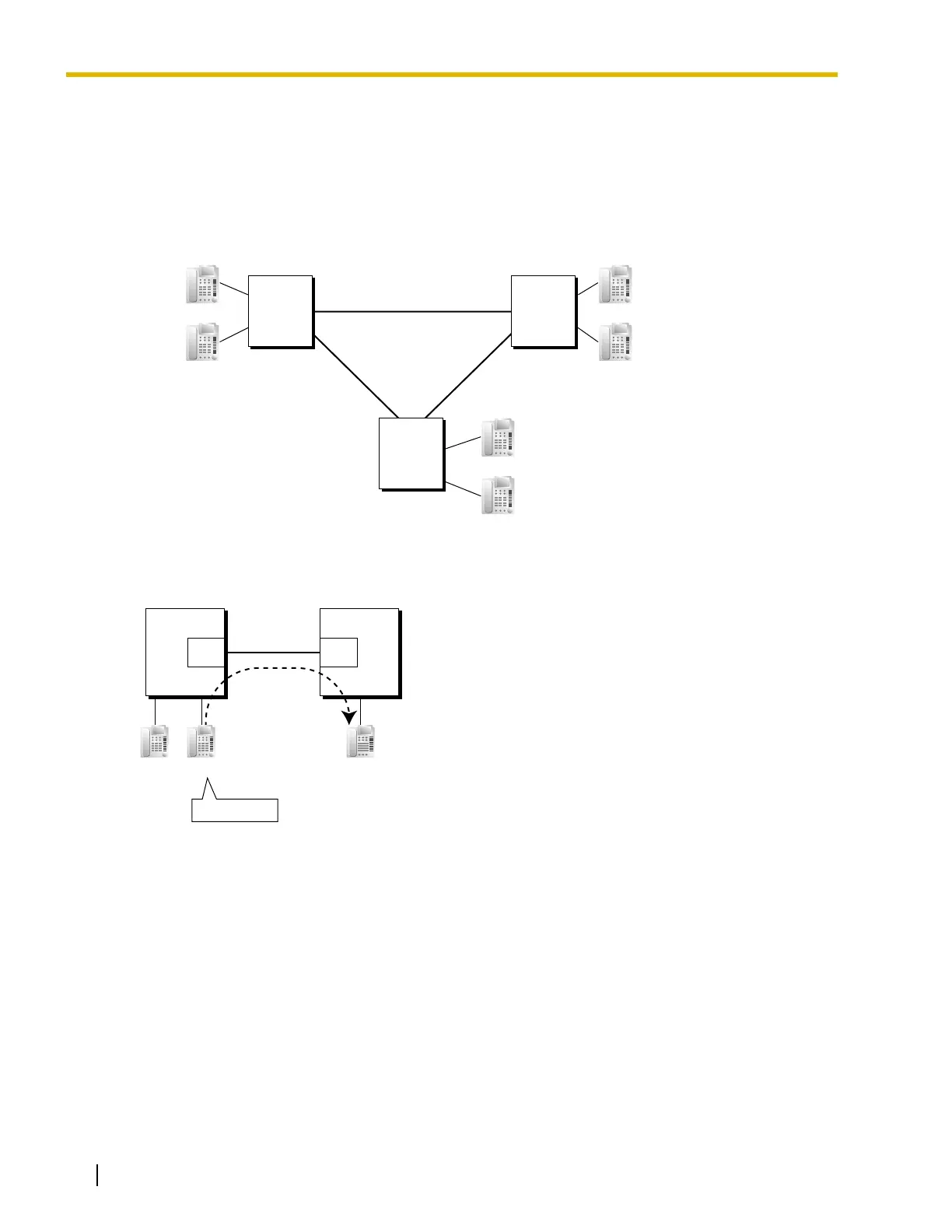